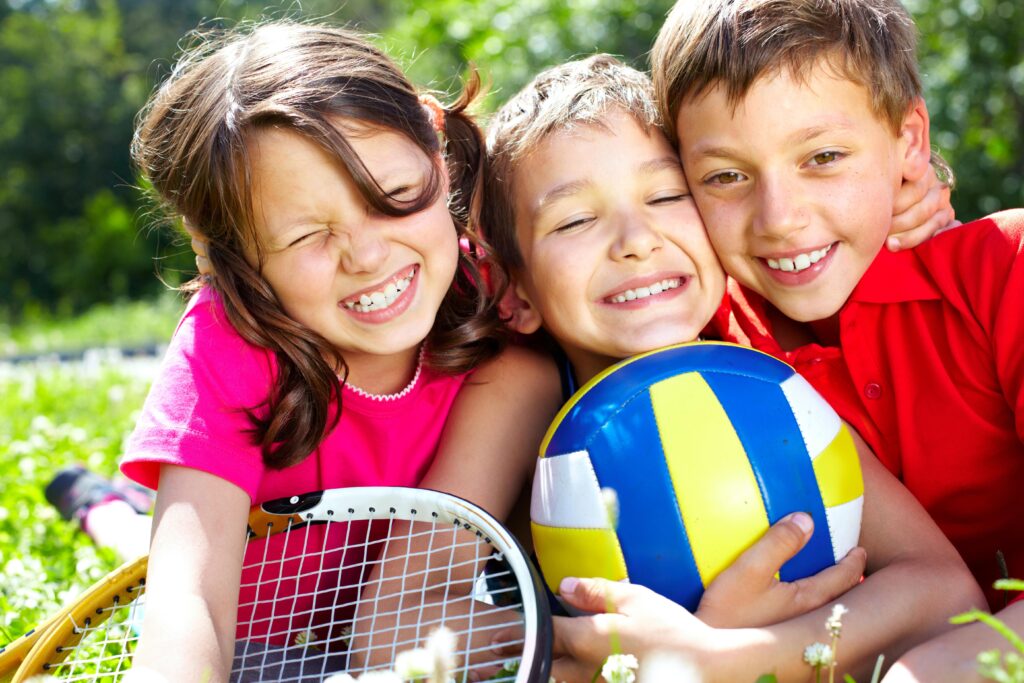As parents increasingly seek ways to support their children’s physical health and social development, the question of when kids should start playing organized sports has taken center stage. Recent research sheds new light on the optimal age for introducing young athletes to various sports activities, balancing benefits like coordination and teamwork against risks such as burnout and injury. In this article, The Everymom examines the latest studies and expert insights to help families make informed decisions about the right time for children to embark on their athletic journeys.
Optimal Age for Introducing Children to Sports According to Experts
Experts commonly agree that introducing children to sports between the ages of 4 and 7 tends to offer the best foundation for both physical and social development. During this early childhood phase, kids are naturally curious and developing fundamental motor skills, making it an ideal time for playful, low-pressure engagement in activities like swimming, gymnastics, or soccer. Pediatricians emphasize that at this stage, the focus should be on fun and exploration rather than competition, fostering a positive association with physical activity.
Early exposure helps children improve coordination, balance, and confidence, while also nurturing teamwork and communication skills. Many specialists also highlight the importance of allowing kids to try out multiple sports during these years to identify their interests and strengths without feeling confined.
Once children reach around age 8 to 12, they become more adept at mastering complex movements and can begin more structured training if they show interest. It’s during this period that sports can evolve from casual play into organized participation, with coaches closely monitoring skill development and ensuring safe practices. Notably, experts caution against early specialization in a single sport before adolescence due to risks of burnout and overuse injuries.
Below is a simple guideline table summarizing expert recommendations:
| Age Group | Recommended Approach | Examples |
|---|---|---|
| 4-7 years | Playful introduction, focus on motor skills | Tag games, swimming basics, gym fun |
| 8-12 years | Structured practice with varied sports | Soccer clinics, beginner basketball, dance classes |
| 13+ years | Increased specialization, competitive play | Team sports, individual training, tournaments |
Balancing Physical Development and Emotional Readiness in Youth Athletics
Successful participation in youth sports hinges on a careful blend of physical growth and emotional maturity. While children’s bodies develop at varied rates, forcing early specialization or intense training can lead to burnout or injury. Research underscores the importance of allowing young athletes to explore different activities at their own pace, fostering not only motor skills but also confidence and social interaction. Experts highlight that children often benefit from sports environments that prioritize fun and skill-building over competition, especially in the foundational years.
Emotional readiness plays a pivotal role in sustaining long-term engagement and overall well-being in sports. Young athletes who demonstrate self-regulation, resilience, and the ability to handle teamwork pressures are more likely to thrive. Coaches and parents can support this balance by encouraging open communication, setting realistic expectations, and creating inclusive atmospheres. Below is a simplified guideline on markers of physical and emotional readiness to consider before enrolling a child in organized sports:
| Readiness Aspect | Indicators to Watch For |
|---|---|
| Physical | – Basic motor control – Ability to follow simple instructions – General coordination |
| Emotional | – Enjoyment of group play – Ability to handle feedback – Patience during practice |
Strategies for Parents to Encourage Healthy Sports Participation Early On
Experts emphasize the importance of fostering a positive environment that prioritizes fun and skill development rather than competition at young ages. Parents can play a pivotal role by encouraging children to explore different sports, enabling them to discover what they enjoy most without pressure. Incorporating play-based activities, such as obstacle courses or informal ball games, helps build coordination and social skills while keeping the focus on enjoyment. It’s also crucial for parents to provide consistent emotional support, celebrating effort over outcome to help children maintain a healthy attitude toward sports participation.
Setting realistic expectations and maintaining open communication with coaches can significantly influence children’s sports experiences. To create a balanced routine that fosters lifelong physical activity, parents should consider these strategies:
- Prioritize variety: Introduce multiple sports to prevent burnout and overuse injuries.
- Encourage autonomy: Let children choose which activities they want to pursue.
- Monitor emotional well-being: Watch for signs of stress or frustration and adjust accordingly.
- Promote teamwork: Highlight collaboration over individual success.
- Limit specialization: Postpone intense focus on a single sport until adolescence.
| Age Range | Recommended Approach | Goal |
|---|---|---|
| 3-5 years | Free play, basic motor skills | Develop coordination and enjoyment |
| 6-9 years | Multi-sport introduction, play-based learning | Build diverse skills and social interaction |
| 10-12 years | Moderate skill refining, team participation | Enhance technique and teamwork |
To Conclude
In navigating the question of when children should begin participating in sports, research underscores the importance of balancing physical readiness, emotional development, and individual interest. While there’s no one-size-fits-all answer, experts agree that early exposure to playful, unstructured physical activity sets a positive foundation, with more organized sports becoming appropriate as children mature and express genuine enthusiasm. Ultimately, fostering a supportive environment that prioritizes enjoyment and personal growth over competition remains key. As parents and caregivers consider the timing, staying informed by current research can help ensure that kids reap the lasting benefits of sports participation on their health and well-being.





